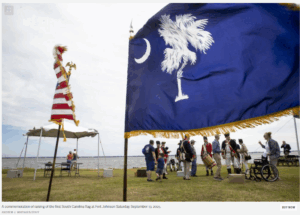LOUISIANA: The Fall of Confederate Shreveport
SHREVEPORT, La. (KTAL/KMSS) – During the American Civil War, eleven Southern cities were badly damaged or destroyed and almost 116,000 people were displaced. That’s a little more than 1% of the South’s entire population.
Yet somehow Shreveport, Louisiana, the capital of Confederate Louisiana and Headquarters for the Confederate Department of the Trans-Mississippi wasn’t destroyed.
NWLA: First to secede, last to surrender
Northwest Louisiana was the first place in the American South to secede from the Union after Abraham Lincoln was elected to the presidency, and Shreveport was the last city to surrender to Union Forces at the end of the Civil War.
But not all people in Louisiana wanted to secede from the Union and join the Confederacy. Louisiana’s vote for secession in late 1860 is actually evidence of a deep political divide in the state.
Before the Civil War, an anti-Confederacy, pro-abolition newspaper publisher in northwest Louisiana began working to give Unionists the bold headlines they needed to unite. And by 1860 in Claiborne Parish, where the Homer Iliad originated, 658 citizens voted for secession while 896 voted to remain with the Union.
Here’s how other parishes in NWLA voted when it came time to chose sides.
Desoto Parish had 666 votes for secession and 50 votes for the Union. Bossier Parish voted 407 for secession and 379 against it. And unsurprisingly, as it was for most river parishes, Caddo Parish had 751 votes for secession and 123 votes for the Union.
Caddo Parish’s vast-majority vote to secede from the Union may be partially to blame for the extreme amount of violence that occurred in and around Shreveport after the Confederacy lost the war.
This violence earned the parish the nickname Bloody Caddo.
And ultimately, votes for secession cast by citizens across the entire state of Louisiana totaled 20,602, while 18,748 voters opted to stay with the Union.
Almost half of Louisiana voters did not want to secede from the United States.
Defending the Red River Valley
In a previous article, we discussed Shreveport’s role in the Civil War and why it still matters.
ow the Caddo Parish Civil Rights Trail Project team wants to show how Shreveport’s connection to the Confederacy was intricate.
Here’s a closer look at how Shreveport was deeply tied to the Confederacy by the midpoint of the war.
The Civil War was well underway when the Confederacy was virtually split in half by Union troops. The Confederacy quickly reorganized its western military districts early in 1863, when the areas under its control west of the Mississippi River were placed under a separate command or “department” called the Confederate Department of the Trans-Mississippi. Shreveport became the headquarters of the department.
Soon afterward, the Confederacy in Shreveport was busy building and repairing Confederate boats and submarines while an entire team of highly-trained engineers designed and built fortifications to protect the entire Red River valley from the encroachment of Union troops.
t was a big ask, too, because the Trans-Mississippi included Louisiana, Arkansas, Missouri, Oklahoma (Indian Territory), and Texas. The troops with the Trans-Mississippi who were stationed in Shreveport had a large area to defend.
Senior Commanders in Confederate Louisiana
Many West Point graduates or instructors who emerged from the ranks of the prestigious military school to fight for whichever side called to them the loudest. Some became officers for the Union, while others were commissioned into the Confederacy.
Several West Point-trained engineers and instructors spent much of the war fighting for the Confederacy in Shreveport.

Lieutenant General Edmund Kirby Smith, commanding general of the grandiose-sounding “Confederate Department of the Trans-Mississippi,” and Major General Richard Taylor, his head of the District of Western Louisiana, were the senior commanders of the Confederate Department of the Trans-Mississippi.



